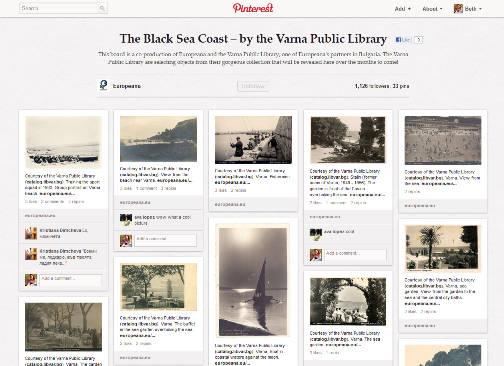User Engagement and the Distribution of Culture
How has the digital revolution affected the distribution of culture? Geer Oskam, Europeana Senior Marketing Specialist, reflects on this question and tells us about some of Europeana's user engagement practices.
Last week I was in Stockholm where I attended the Truly Digital conference, a Scandinavian conference looking at how to build a ‘Nordic Ecosystem for the Arts’. The gathering in Stockholm was the first in a series of four seminars to get an answer to the question ‘How can we use the resources of the current digital landscape to improve the infrastructure?’
The Nordic countries have a longstanding tradition of cooperation; together they have a strong infrastructure of public and semi-public cultural institutions. The rapidly expanding worldwide web is the starting point for a discussion about the digital landscape and the possibilities for new ways of distribution of digital heritage and (digital) audience involvement.
It’s difficult to sum up in just a few words exactly how the digital revolution has affected the distribution of culture. One thing is certain - we are all affected by it. Europeana has shown that big things can be possible if we join arms. The CC0 release of Europeana metadata is a big turning point in free digitised cultural heritage; it shows the power of cultural institutions working together in a similar format. The speed at which the web is developing causes difficulties for many institutions: what might be useful today is outdated next year. Therefore it's very important to think beyond individual projects and to find out where possible partners are and to let yourself be informed about where new online developments are heading.

Technology changes quickly. This is Calculadora, a calculating machine from Sweden that in its time in the 1960s was 'one of the latest models of mechanical calculator'. Image from Institut Cartogràfic de Catalunya, CC-BY-NC-ND.
Lots of institutions are hesitant about making their content available for just anyone. Very understandable since this is a big change from being a ‘controlled’ database. But what should you do if you have cleared the topic of opening up your data, and you want as many people to interact with your collection as possible? The magic word right now seems to be API (Application Programming Interface).
Europeana has a free Europeana API key, available for anyone. With the Europeana API key you can create an access point to the Europeana database, for example, by implementing it on your website to enrich users' search results. But you can also use the Europeana API to start developing specific mobile applications. Hackathons that Europeana has organised show you many of these ideas.
An even deeper form of interaction with cultural institutions' content is through end-user engagement. A fairly new concept that is difficult to put a finger on as it requires knowledge about user groups and multiple social media platforms. At Europeana, it is our goal to create a repository of user engagement concepts for our partners to get inspired by, or to learn what to do and what not to do.
A good example of a user engagement concept is our presence on Pinterest. We came up with four bullets points that should form the pillar of a user engagement concept: a target group, a theme or collection from our database, a partner and a certain existing online platform. At Pinterest we created a board together with the Varna Public Library (see image).

Here we share very visual content with our followers and ask them to interact by, for example, commenting on or re-pinning the images. One of the surprising results that we found out is that users coming from Pinterest to Europeana.eu look at more pages and stay longer on our website than users from Facebook or Twitter. So, if you are building your presence online this is an audience worthwhile tapping into.
After last week's seminar in Stockholm, I am once again convinced that it is not only key to talk about web trends and share knowledge but also to just start doing. You will probably make some mistakes (presenting the wrong content for the wrong online audience), and yes, entering new territory might be ‘scary’ but the only thing you are certain of when you don’t participate is that you won't be seen. So, apart from talking, let's start doing, and sharing!
